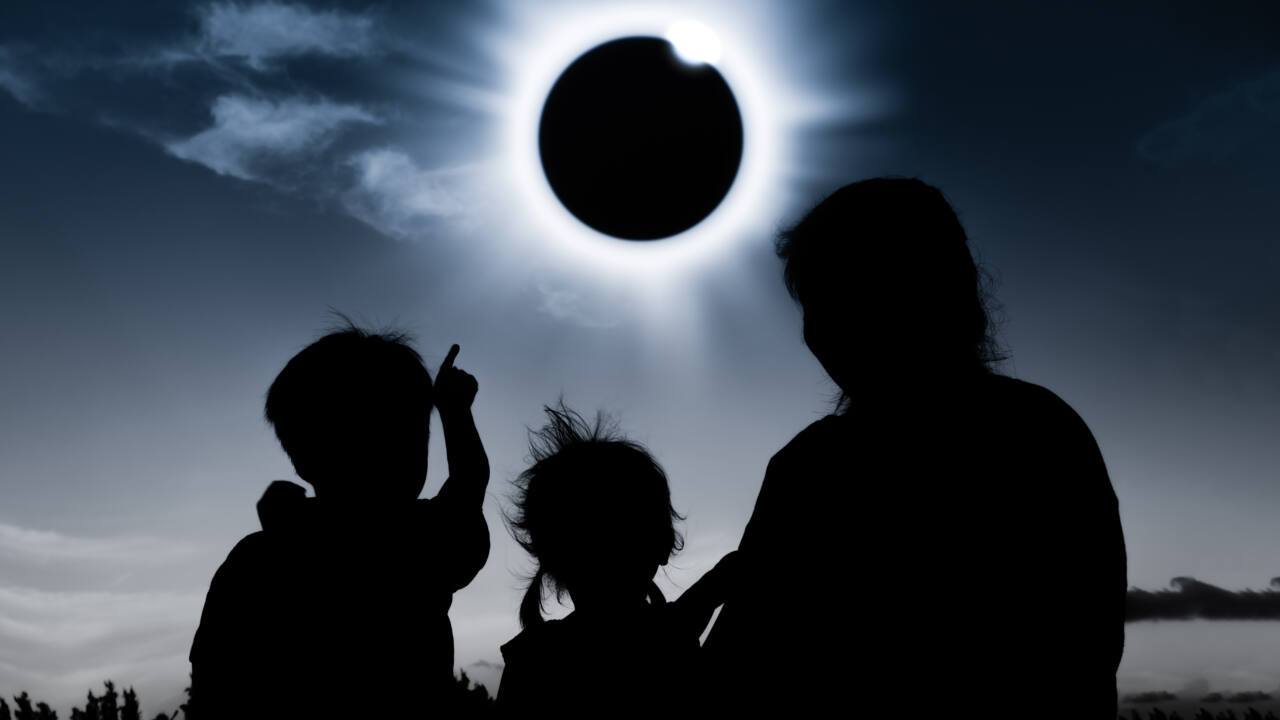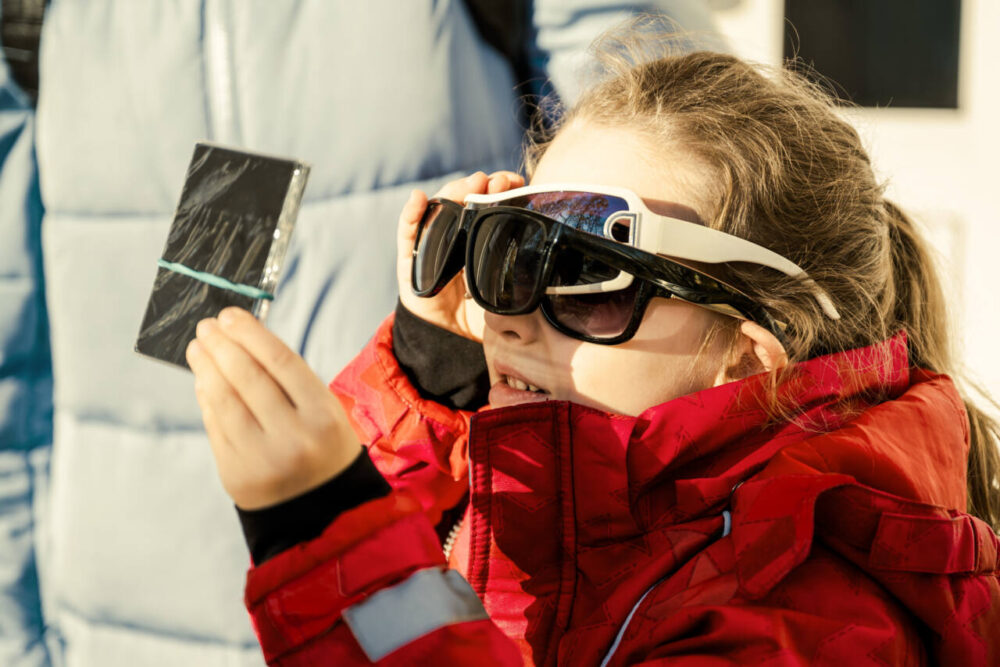How to see the eclipse without glasses

You may be looking forward to seeing the upcoming total solar eclipse that’s happening on Monday, April 8. But when the moment arrives, are you prepared for how you’ll see it?
Looking straight at the sun can severely damage your eyes, and regular sunglasses won’t offer the degree of protection you’ll need. “Even a little bit of the sun’s light is enough to hurt your vision,” says Dillon Marcy, the planetarium coordinator/presenter for the Georgia Southern Planetarium in Statesboro, Georgia. In fact, eye damage can occur in less than a minute.
That’s why NASA recommends solar glasses, or solar viewers, that are 100,000 times darker than regular sunglasses and block nearly all visible, infrared and ultraviolet light. To protect your eyes, you can buy solar glasses from this list of reputable retailers compiled by the American Astronomical Society (AAS). Make sure anything you buy meets the international safety standard known as ISO 12312-2.
MORE: This interactive map shows the best time to see the solar eclipse in your city
But what if you can’t get your hands on this safety essential, and you still want to take part in this amazing event? Here’s how to see the eclipse without solar glasses.
The Indirect Viewing Method
The most common recommendation from space experts is to watch the eclipse with the pinhole projection method.
“This means that sunlight projects through a small hole in an object onto a surface beyond, and you look at the solar image on that surface,” says Hunter Miller, the astronomy educator at the Adler Planetarium in Chicago. The good news: You can create this effect using household items.
MORE: 5 apps to help maximize your total solar eclipse viewing experience
You might bring an object that already has small holes in it — one popular choice is a kitchen colander. “Hold it up outside during the eclipse so that it casts a shadow on the ground,” says Alec Warren, the director of the Frost Planetarium and Science Museum in Miami. “Rather than looking up at the sun, look down at the shadow your pinhole ‘camera’ casts, and you will see a projection of the eclipse through the hole on the ground in front of you.”
Or, you can DIY your own projector. “Just remove the opening of a cereal box and cover half of that opening with aluminum foil,” says Marcy. “Put a small hole in the middle of the foil with a sharpened pencil or a thumbtack.”
MORE: You can see the total solar eclipse from these national parks
When the eclipse begins, look through the other opening of the cereal box and turn away from the sun. Then, slowly move your head back until you see the sun projected in the box.
“During the eclipse it will be easy to tell you are doing it correctly, as you will eventually see the sun being blotted out,” Marcy says.
Here’s a YouTube demonstration:
No cereal boxes around? Really, all you need are two piece of cardboard.
“Cut a one-inch hole in the first piece of cardboard, then tape a piece of foil over the hole,” says Jim Todd, the director of space science education at the Oregon Museum of Science and Industry. “Then make a pinhole in the middle of the foil.”
You’ll use the second piece of cardboard as a screen. “With the sun behind you, hold the first piece of cardboard as far from your cardboard screen as you can,” Todd says. “The farther the pinhole is from the screen, the bigger your image will be.”
One Important Rule To Follow
Don’t look directly at the sun through the pinhole. And only during the very brief “total” eclipse moment, when the moon completely blocks the bright sun, is it safe to look without using one of these methods. The second you see the sun begin to emerge again, you must look away!
That said, not having solar glasses shouldn’t stop you from experiencing the eclipse — even if you don’t have any of these items.
“You can also see natural pinhole projection if the sun shines through the leaves of a tree,” says Miller. “The small spaces in between the leaves act just the same!”
Photographing the Eclipse
“Eclipse photography is a tricky process,” says Warren. “It’s best practice to seek advice from an astronomer or expert before attempting to photograph an eclipse.”
Just like you can’t stare directly into the sun, you can’t stare at it through your camera, either. And slipping your eclipse glasses over the camera lens isn’t recommended, as the concentrated solar rays will damage the filter and inflict serious injury to your eyes.
“Instead, telescopes, cameras and optical devices need to be fitted with special solar safety filters that allow for direct solar viewing and photography,” Warren says.
If you’d like to place a solar filter over your smartphone camera lens, you can buy one from any of the retailers AAS recommends. Again, it’s important to make sure they are certified as safe — especially when you’re buying online. Some of the companies that make these filters, like VisiSolar and SafeShot, have ISO compliance documents available on their sites.
Watch the Eclipse via NASA’s Livestream of the Event
Another way to watch the eclipse without glasses? Sit back and take it in from your living room couch as NASA livestreams the event on Monday, April 8 from 1-4 p.m. EDT. NASA will feature space experts discussing the eclipse and telescopic views of it from several sites along the path of totality.







